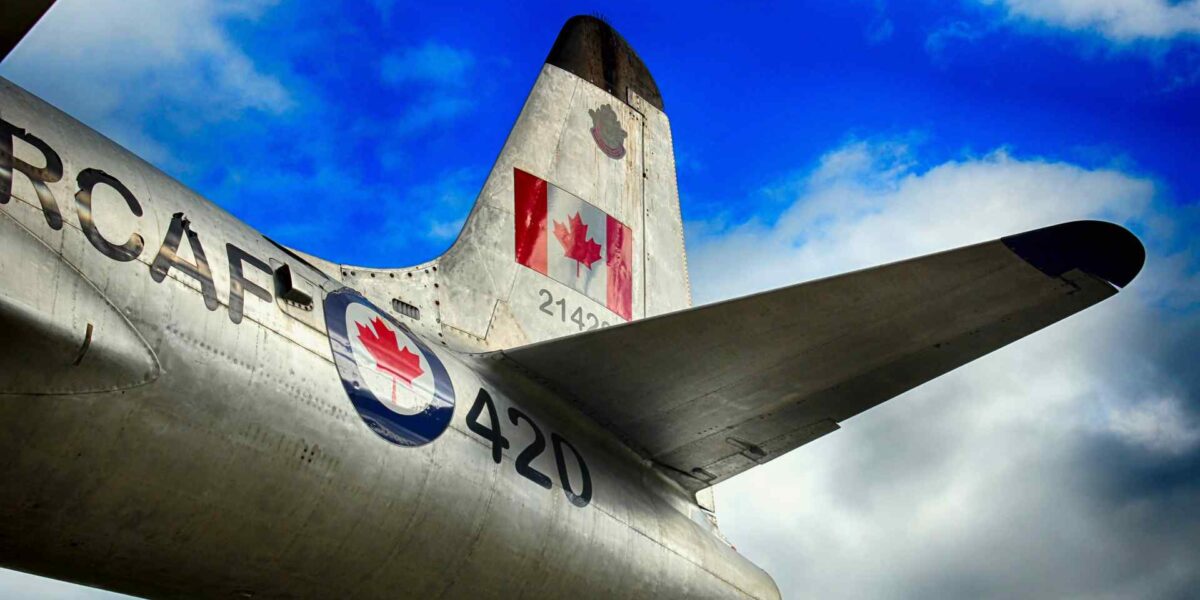The Royal Canadian Air Force turned 100 this week. Celebratory commentary has focused on the institution’s role in “defending Canada”. This is the true story:
The British spurred the creation of the Canadian Air Force. During World War I over 20,000 Canadians joined the nascent British air force and London suggested Canada raise its own air units. Near the end of the wildly destructive inter imperialist conflict, Ottawa authorized the creation of an England-based Canadian Air Force, which disbanded after Britain cut its funding after the war ended.
Six years later, on April 1, 1924, the Royal Canadian Air Force was formally established with assistance from the UK. Prior to its creation, the nascent Air Force engaged in reconnaissance during the May-June 1919 Winnipeg General Strike. (To this day some wealthy supporters become honorary Air Force colonels.)
For years Air Force racism was codified. Its policy stated, “all candidates must be British subjects and of pure European descent.” In 1941 the deputy director of manning in the personnel branch at Air Force headquarters, H. P. Crabb, issued a clarification letter to all recruiting offices regarding “Orientals and Negro applicants”. It stated, “only those of European descent will be accepted for appointment or enlistment in Aircrew.” In other words, Asian and Black applicants could enlist but they were only eligible for less prestigious ground duty positions.
At the start of 1946 the RCAF reinstated a requirement that applications from Black, “Oriental” and “former enemy aliens” be forwarded to headquarters for approval. Denying there were restrictions placed upon the eligibility of “coloured applicants”, the chief of the air staff claimed “coloured” applications had to be sent to headquarters to “carefully scrutinize” whether the applicant could “mix” with whites, which was “for the protection and future welfare of the applicant.” The policy was still employed by the RCAF in 1956.
During World War II the RCAF reinforced European colonialism. Canadian pilots defended the important British Air Force base at Takoradi, Ghana, and others traveled there to follow the West African Reinforcement Route, which delivered thousands of fighter planes to the Middle East and North African theatre of the war. Canadian Air Force units also attacked Japanese positions in India and Burma while also providing transport support as Britain reasserted control over their former colonies.
After WWII the Air Force pushed to integrate with their US counterparts. The RCAF expanded its ties to the US Air Force command in Colorado Springs as part of forcing the political leadership to accept North American Aerospace Defense Command (NORAD), which granted the US commander the ability to deploy Canadian jets stationed in Canada.
For many years the Canadian Air Force had hundreds of US atomic bombs at its disposal in Europe. Based in Germany, the CF-104 Starfighter, for instance, operated without a gun and carried nothing but a thermal nuclear weapon.
RCAF has long used public funds to convince us to support its outlook and expand its budget. To create popular support for the Air Force they began promoting airshows nearly a century ago. For decades they distributed pro Air Force messages in schools and elsewhere. Today they organize an annual Air Force Day on Parliament Hill.
Since the early 1990s the RCAF has been involved in three brutal US-led wars. In 1991 a dozen Canadian fighter jets participated in the bombing of Iraq. CF-18 Hornets joined US and British ships in destroying most of Iraq’s hundred plus naval vessels in what was dubbed the “Bubiyan Turkey Shoot.” Coalition bombing destroyed much of Iraq’s civilian infrastructure including electricity production, sewage treatment plants, telecommunications equipment, etc. Twenty thousand Iraqi troops and thousands of civilians were killed.
At the end of that decade Canadian fighter jets bombed Serbia for 78 days. In the last stage of the break-up of the former Yugoslavia, 18 Canadian fighter jets participated in NATO’s 78-day bombing of Serbia in the spring of 1999. The CF 18s dropped 530 bombs in 682 sorties — approximately 10 percent of NATO’s bombing runs. Hundreds died during NATO’s bombing and hundreds of thousands were displaced in a war that contravened international law.
In 2011 seven CF-18 fighter jets participated in the war on Libya and Canadian general Charles Bouchard oversaw the entire NATO operation. Canadian-commanded NATO fighter jets dropped thousands of bombs in a bid to secure regime change in the oil-rich nation. The assault subsequently unleashed more than a decade of instability and violence in Libya as well as deteriorating social and economic indicators.
The Royal Canadian Air Force has not “defended Canada”. It was born of the British Empire and for the past half century has advanced US imperialism.



